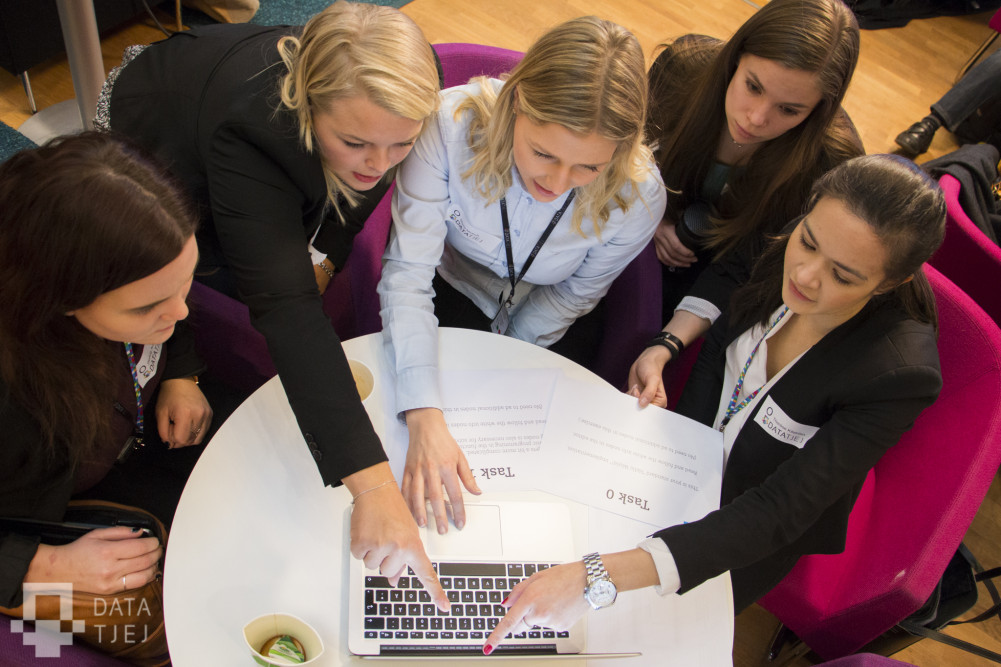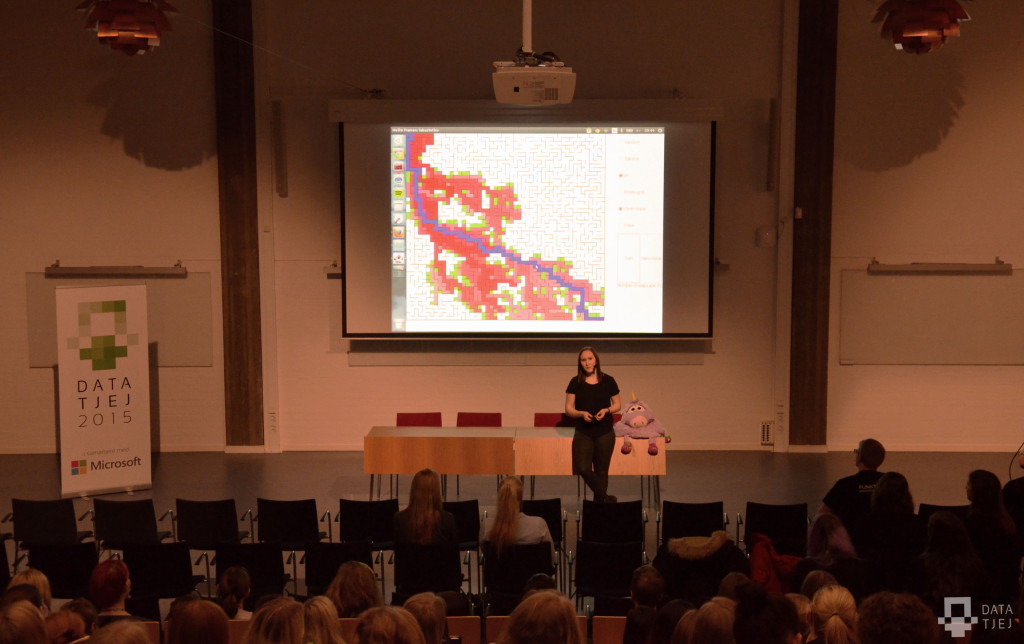I’ll try to summarize three great days at QCon in London, not going into detail about all sessions that I attended but high-lighting some of the ones I really liked.
Most sessions were recorded and will be available for the public audience over time, make sure to check them out!
QCon offers a wide variety of tracks ranging from low level “Close to the metal” to more “soft” skills like “Optimizing You”. There were also a track for the main sponsors of the conference. The wide variety of content and speakers made choosing what session to attend somewhat of a problem; I had made a schedule before traveling to the conference, and it broke down during the first presentation of the tracks before the first keynote…
Kicking of QCon was a great keynote “Unevenly Distributed” by Adrian Colyer. Adrian reads a paper a day, summarises it and publishes it on his blog “The Morning Paper”. This was a very inspiring and well presented keynote that raised my interest in reading papers and as Adrian said “5 reasons to love papers”:
- Great thinking tools
- Raise your expectations
- Applied lessons
- Great conversation
- Unevenly distributed
The only problem with reading more papers and learning more is that:
“The more I learn, the more I realize how much I don’t know.” – Einstein
After the keynote we listened to Gavin Stevenson, Engineering Lead at WilliamHill, who talked about WilliamHills betting engine and how they are transitioning from a large database centric solution to a micro service based architecture (this was a common theme during the conference). They were building a “production ready” betting engine in 2 week sprints, testing it with real production data. The most interesting take away was how important it is to really try to break your system. When the system fails, that’s when you learn. The old saying “If it ain’t broken, don’t fix it” just doesn’t apply anymore.
“If it ain’t broken, try harder!” – Gavin on testing
One of the few really non-software related talks was held by long distance runner Simon Wheatcroft.
When losing his sight the age of 17 due to a genetic degenerative eye condition, he began a journey of adapting tech to achive the impossible.
Through the aid of the Runkeeper application, he started running solo outdoors. Simon will be running his first solo race in May 2016; the Four Deserts Series Sahara Race in Namibia. There, he’ll use GPS coordinates and a mobile app to navigate across the 250 kilometer distance.
A very inspirational and humbling talk!
“You just have to tell yourself that pain doesn’t last forever”- Simon on running 250k
From non-technical to real in-depth low level Netty implementation details. Norman Maurer from Apple described how Apple is using Netty as a web service delivery platform for most of Apple services. Apple are running 550000+ Netty based services, handling 10s of Petabytes of data every day and millions of request per second.
Norman guided us in different aspects of the Netty framework and how the default JDK implemtations just aren’t good enough for this kind of load and how they’ve commited several improvements to the Netty open source code. Very interesting and down to the metal of how to hack the JDK and using JNI to get better performance with; for example memory allocation and SSL.
Martin Kleppmann held one of the best presentations of the whole conference where he talked about keeping data sources in sync, moving away from (distributed) transactions to streams. The content was not very in-depth, but Martin had deep knowledge of the subject, excellent slide and a lot of energy when presenting. This is a talk everyone should watch and learn from.
“Stupidly simple solutions are the best” – Martin Kleppman
Day two started with Linda Northrops keynote “Reflections on Software Architecture”. Linda looked at software architecture and how it’s importance and acceptance have changed over the last 20 years. To summarize: architecture is important, and it’s a way to manage technical debt.
Josh Evans from Netflix presented how Netflix have expanded there streaming services to almost the entire globe (Netflix#Everywhere).
Netflix have had some major outages and failures, both in their own software and the underlying cloud AWS-platform. Josh concludes that “Failure is inevitable” and that one really have to embrace the failure and not fail in the same way twice. This had lead Netflix to embrace a “Failure-driven architecture” approach when building their platform.
Netflix’s architecture is really impressive, although not applicable for most comapanies/services, so it’s always interesting to hear what they are doing to actually run the platform at that scale.
Josh presented Netflix four architecture pillars; data, caching, traffic and micro services, and how they use (among other techs) EVCache, Cassandra and DNS to keep their services up and running in case of total failures of an AWS datacenter/region. He also showed how they test failure in different regions and route trafic to another region to minimize customer impact.
If infrastructure and architecture at scale is of any interest, watch this talk when it comes online!
“Never fail in the same way twice” – Josh Evans
Mitchell Hashimoto (founder of Hashicorp) gave his talk “Observe, Enhance, Control: From VMs to Containers”. In his talk he takes us back to 2006 and the age of VMs and how the datacenters and the problems to solve are driving the architecture of the software for Monitoring, Configuration and Deployment. Jumping to 2016 and the age of containers, Mitchell argues that the “state-of-the-art” tools from the age of VMs are not really suited to handle the tasks anymore. Even though the tools are extremely good, they do solve a completely different problem. The content of the talk was nothing new, but it is really inspiring to listen to Mitchell talk.
Gil Tene talked about Hardware Transactional Memory. Really low-level stuff about CPU pipeline and cache optimization. HTM in the JVM is not new, Azul has been delivering both hardware and a customized JVM with JVM for 10 years. What’s interesting is that it will become mainstream now when Intel is shipping CPUs with support for HTM. Gil succeeded in a very educational way describe the complexity of HTM and how it can be implemented in for example the standard JVM. In the end Gil talked about how the developers must reason about locking and synchronization to make the most of HTM in their code.
One of my most anticipated talks during the week was Dan North‘s “Making a sandwich”. I hade very high expectations for this talk, and Dan managed to exceeded them (as usual). Dan talked about giving feedback, how feedback in itself is a system and why we should do it. Giving and receiving feedback (which is really just to say ‘Thank you’) is, in my opinion, one of the hardest skills to master and we should really practice a lot! Dan presented some useful techniques and tricks, but you should really watch this yourself!
Last day started with a very entertaining and inspiring keynote delivered by Kolton Andrus (Netflix) and Peter Alvaro (University of California). Peter and Kolton shared their expereience of a very successful collaboration between industry and academia. Peter had a “big idea”, Lineage-driven fault injection, and together with Kolton this evolved from a theoretical model into an automated failure testing system that leverages Netflix’s state-of-the-art fault injection and tracing infrastructures.
“My code is now actually running live on Netflix…” “…well, minus all of the println statements”
Vikki Read and Alex Wilson from Unruly described how they are using the extreme programming (XP) ideas to deliver high quality software and how it can be made to work in a very agile environment. Since agile and XP focus a lot on collaboration and knowledge sharing, they shared some problems that they’ve had with getting new employees up to speed and how growing teams make for example (too long) stand-ups being a problem.
The final session I attended before heading to the airport was Tammer Saleh at Pivotal talking about the mistakes people make when building a microservices architecture, i.e. Microservice anti-patterns. When are microservices appropriate as an alternative to the monolithic app? The problem with monolithic apps is not about the code, it’s about the teams! Large teams (or multiple teams) can’t work effectively in the same codebase.

Its not about code, its about teams
Tammer stressed that “the most common mistake is to start with microservices”. Start monolithic and extract as needed, because microservices are complex and impose a constant tax to your development.
Tammer explores how to draw the lines between services. dealing with performance issues, testing and debugging techniques, managing a polyglot landscape and the explosion of platforms, managing failure and graceful degradation.
“Boring is beautiful” – Tammer Saleh
Most of the interesting sessions I attended during the week were about failure, and how to handle failures. Quotes like “Failure is inevitable”, “Failure is an opportunity to learn” and the importance of building an architecture that can manage failures were common topics. Migrating from a monolithic application to a more micro service oriented architecture were also popular.
Overall QCon London was a great conference, I will most likely try to get back next year! All tracks had great speakers, which is problematic since you have to choose between sessions – on the other hand most of the sessions are recorded so I know what I will be doing the coming weeks.







Recent Comments